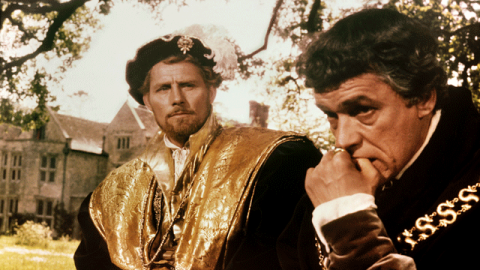
Mark Cosgrove Cinema Curator
on Mon 20 June 2016The Future of Cinema is its Past
Posted on Mon 20 June 2016
What is the future for the cinema? And what future for films, being shown in the cinema to appreciative audiences? Introducing Cinema Rediscovered...
There was a time when cinema-going was the leisure pursuit of the day – well evening mainly – but you could go in the day if the fancy took you. Indeed, tales are told by older generations of spending all day and evening in the cinema watching two or three different films, and sometimes the same film over again.
The Hollywood star system was at its peak with such regulars as Humphrey Bogart, John Wayne, Jimmy Stewart, Joan Crawford, Ingrid Bergman lighting up the screens. Also British stars such as Richard Attenborough, John Mills and David Niven would draw an eager crowd. And even what were termed ‘B movies’ and B movie stars such as Broderick Crawford, Randolph Scott would get audiences queuing round the block. Cinema was both the entertainment of the day and accessible to all, regardless of class or income.
The cinemas themselves were termed Picture Palaces for a reason: a film was where you could escape into a magical world and the first part of that trip was walking through the doors of these beautifully designed, luxurious, generously appointed venues.
Such was the popularity of cinema in its heyday that it came out top in league tables of things people liked spent their leisure time on – more admissions than theatre, opera, or gallery visiting. The highest figure was for 1946 where 1,635 million people went to the cinema. This worked out at a quite staggering average of 33 visits to the cinema per person per year. Compare that to last year – 2015 where that figure of average visits to the cinema per person per year was… just 2.7
So what happened? What went wrong? First was the arrival of television in the 1950s and the presence of stars and personalities in our front rooms. Cinema-going never really recovered from that blow and admissions started to fall. Then the ‘Picture Palace’ started to get frayed round the edges and started chopping up these beautiful large auditoriums into smaller boxes.
The glamour seemed to go out of it all.
However, things took a turn for the better in the 1980s with the arrival of the first multiplex in the UK in (where else) Milton Keynes. This new style of purpose built multi-screen film presentation, along with the phenomenal success of films like Jaws (1975) and Star Wars, gave a new lease of life to cinema-going.
Now you can watch films on your mobile, laptop, large screen TV at home in glorious 7.1 surround whenever you want. Hell, you can even get a digital projector, throw a blanket over a wall at the end of the garden, invite your friends round and have your own cinema (being sure to check copyright clearances!)
So what future for the cinema – and what future for films – being shown in that cinema to appreciative audiences? In my view, the future of cinema is in its past. I say that, having attended the ‘Il Cinema Ritrovato’ film festival in Bologna many times. Now celebrating its 30th year, this magnificent festival is home to the Cinemateca de Bologna, which – along with archives across the world - restores and brings back to life the immense wealth of the history of film. You might think that this is a purist pursuit - but if you have sat in the Piazza Maggiore with 5000 people watching a newly restored print of James Dean in the classic Rebel Without a Cause (1955) or Terence Malick’s Badlands (1973) or Louis Malle’s Lift to the Scaffold (1958) you will know that this is a medium which can still connect with audiences of all ages and all interests. Importantly, you realise that these films really come back to life once they are up on the big screen - and that they still have that magical quality which holds audiences enthralled.
Previously, I watched the classic John Ford Western My Darling Clementine (1946) in one of the many cinemas the festival uses. It was introduced by the Festival director who said simply “This was the greatest American film ever!” “But it’s not even John Ford’s best film…” I thought to myself – however, by the end I had to agree. The reason I thought that (as I later realised) was that I had never seen My Darling Clementine in the cinema! I had only ever seen it on television. And of course John Ford made the film for the big screen not the small one.
Inspired by Il Cinema Ritrovato and by the experience of rediscovering the unique power of films when they are shown in the cinema, led me to set up Cinema Rediscovered here at Watershed which brings together newly restored versions of older films, such as the wonderful epic British historical dramas The Lion in Winter (1968) and A Man for All Seasons (1966) and a tribute to the late cinematographer Douglas Slocombe who, as well as filming The Lion in Winter also shot everything from Ealing’s The Titfield Thunderbolt (1953) to Rollerball (1975) and Spielberg’s Indiana Jones movies.
As I say, it is my contention that, in this era of digital distractions, the future of cinema is in its past. Cinema Rediscovered will once again see classic films back where they belong – in a cinema on the big screen, entertaining audiences. Discover them anew for yourself.
Written by Mark Cosgrove, Cinema Curator at Watershed. Adapted from Mark Cosgrove’s regular film column in Bristol Life magazine.

